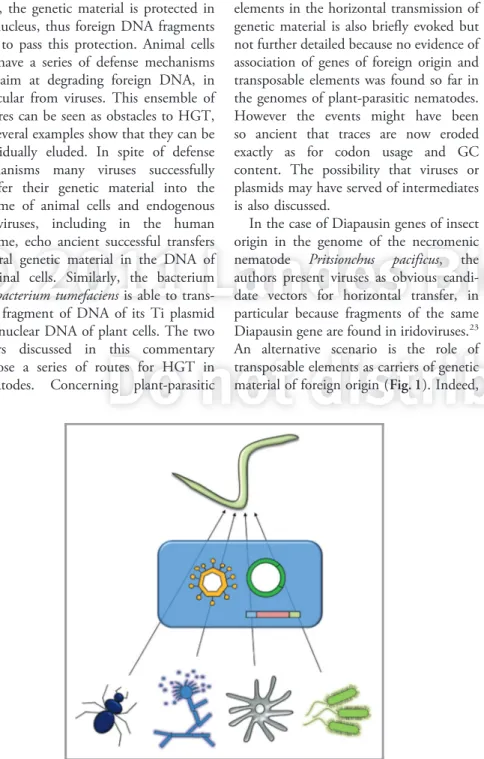What nematode genomes tell us about the importance of horizontal gene transfers in the evolutionary history of animals
Texte intégral
Figure

Documents relatifs
Known NANOG orthologues were retrieved from public repositories (Genbank and Ensembl) and BLAST (tblastn) searches were performed against available genomes and/or transcriptomes
The controversial origin of extant amphibians has been studied using several sources of data and methods, including phylogenetic analyses of morphological data, molecular
Loans in Tikuna are rather easily detected and display typologically interesting patterns of tone imposition, but their immediate source language may be delicate to establish
Given that a previous study on oral production data collected from a similar population in France (Gudmestad et al., 2014) documented the importance of three linguistic factors –
We found that (1) SAL1 and its related genes arose in eutherian mammals with lineage-specific duplications in rodents, horse and cow and are lost in human, mouse lemur, bushbaby
In 1990, it was demonstrated that RNA editing in kinetoplastid protozoa required guide RNAs (Blum et al. 1990), exactly as 22 years later the CRISPR Cas9 enzyme, on the eve
Using different genetic analyses (STRUCTURE, DAPC), we consistently obtained the same results that led to similar conclusions: the presence of a larger genetic diversity
To discriminate between the six hypotheses about the origin of extant amphibians, two methods are available: direct phylogenetic analysis of the sequence data, and comparisons of